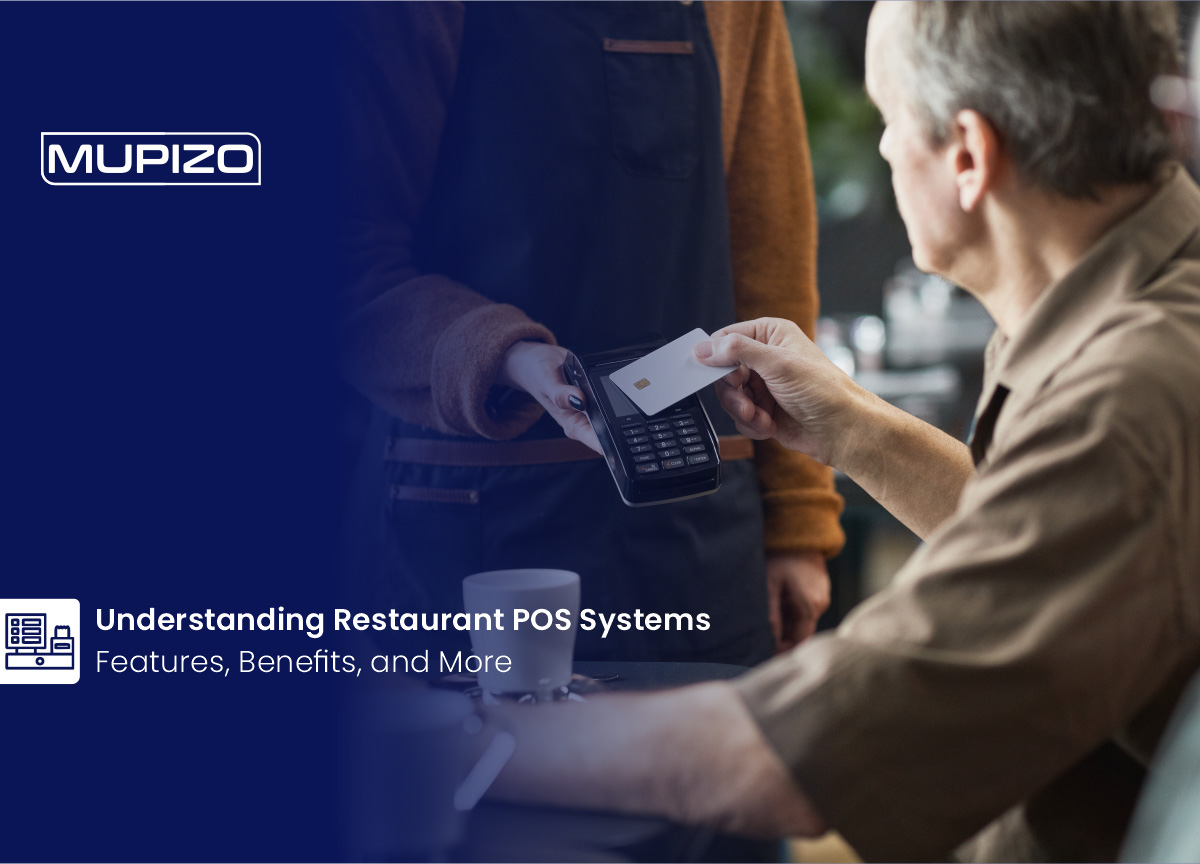Features, and Benefits they Offer for Efficient and Seamless Restaurant Management

The term "restaurant POS" may sound familiar, but what exactly does it entail, and how does a restaurant POS system operate? Short for "point of sale," a restaurant POS system encompasses both the software and hardware used by restaurants to handle customer orders, process payments, manage food inventory, and oversee the entire operation, from the front of the house (FOH) to the back of the house (BOH).
In this comprehensive guide, we will unravel the intricacies of modern point-of-sale systems for restaurants, whether you run a quick-service eatery, fast-casual restaurant, or takeout establishment. You'll gain insights into:
What Is a Restaurant POS System?
A point of sale, often referred to as a POS system or ePOS system, is the physical location where transactions are processed. Traditional table-service restaurants typically have a physical cash register on-site, which serves as the point of sale. Here, patrons can settle their bills using physical cash or credit cards, exchanging money for the restaurant's services.
However, the advent of cloud-based technology and the proliferation of mobile devices has transformed the landscape of traditional POS systems. Cloud-based restaurant POS systems have emerged as a more versatile and efficient alternative.
Cloud-Based Restaurant Point of Sale Systems
A restaurant POS system encompasses both software and hardware that restaurant operators utilize to manage various aspects of their business, including order processing, floor plan management, reservations, sales reporting, inventory tracking, staff scheduling, and menu pricing. In essence, it functions as a comprehensive restaurant management system.
Many of the leading restaurant POS systems in the market today are cloud-based, meaning that all the data they store, such as sales data, menu prices, inventory levels, and reservations, are securely stored on internet servers. This cloud-based architecture provides the flexibility to access and manage your restaurant operations from any device with an internet connection, including computers, tablets, and smartphones. Even in cases of internet outages, most restaurant POS systems offer an offline mode, allowing you to continue working seamlessly. Once the internet connection is restored, your data is synchronized with the cloud.
In essence, a mobile, cloud-based POS system empowers you to work from anywhere, regardless of internet connectivity.
Key Features of a Restaurant POS System
While most POS systems excel at order processing, payment handling, and data storage, the true value of a restaurant POS system becomes apparent when you explore additional restaurant management features. Here are some essential features to consider:
1. Staff Scheduling:While many POS systems do not have built-in labor management and scheduling features, they often integrate seamlessly with scheduling platforms, enhancing your capabilities for staff scheduling and labor cost management.
2. Inventory Management:Efficient inventory management is crucial for controlling food costs and ensuring you have sufficient inventory to meet anticipated demand. Most POS systems include inventory management features that help monitor food waste, variance, and inventory counts.
3. Kiosk Ordering:Restaurant kiosks offer an intuitive interface for customers to place their own orders in-store, improving efficiency for both customers and staff. Ensure that your POS system seamlessly integrates with kiosk solutions that match your restaurant's aesthetic.
4. Order Ingestion:Streamline the process of receiving orders from various channels by ensuring that your POS system integrates with order ingestion tools. This prevents the need for manual entry of orders from third-party marketplaces, reducing errors and missed orders.
5. Driver Tracking:For restaurants that offer delivery services, real-time driver tracking can enhance customer experience and optimize delivery operations. While less common, this feature can be valuable for restaurants managing their own delivery drivers.
6. CRM and Marketing:Leveraging customer data for loyalty programs and promotions is made more accessible when your POS system includes a customer relationship management (CRM) system. It enables you to make the most of customer order and payment information.
7. Health and Food Safety:Compliance with cleaning schedules, hygiene checks, and food safety documentation is crucial for running a restaurant smoothly. A POS system with built-in health and food safety tools simplifies these processes, ensuring you remain in compliance.
8. Integrated Payments:Handling payments efficiently is vital for your business's success. An integrated payment system within your POS streamlines the payment process, minimizing inefficiencies and potential financial losses.
Consider these common payment methods for restaurant delivery, including cash, contactless payment, Apple Pay, Google Pay, and in-app payments, to offer flexibility and convenience to your customers.
Understanding the intricacies of restaurant POS systems, including their features and benefits, is essential for efficient and seamless restaurant management. Keep pace with the latest trends and innovations to stay ahead in the competitive restaurant industry.